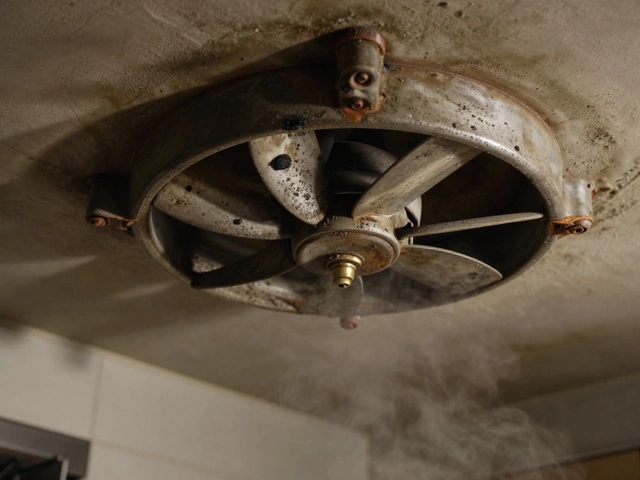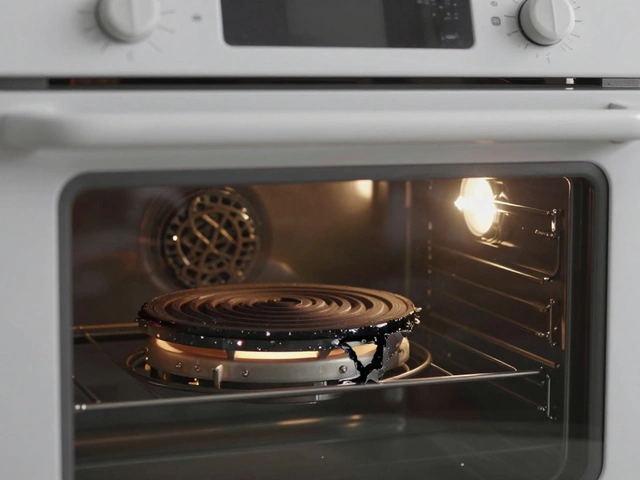When that trusty laptop of yours starts showing signs of wear and tear, knowing just how much you should spend on repairs can save both headaches and money in the long term. Navigating repair costs isn't just about finding the cheapest option—it’s also about understanding what your device needs to perform at its best once more.
Assessing what’s wrong with your laptop is the first step. From cracked screens to random crashes, the range of potential issues is vast. Identifying the problem will help in estimating the cost and deciding whether it’s a DIY fix or time to call in a professional.
As repair shops and parts suppliers tend to charge differently, doing some research on price ranges can provide more clarity. Should you decide the repair route is the best choice over purchasing a new device, understanding these costs is essential. Sometimes, it's just a matter of fixing a small issue yourself with readily available parts, while in other cases, a skilled technician might be necessary.
Before you dive headlong into repair solutions, it’s worth considering some tips for maintaining your laptop’s health. Basic practices, like regular cleaning and software updates, can significantly extend the life of your device, delaying those inevitable repairs as long as possible.
- Assessing the Damage: Understanding What's Needed
- Evaluate Costs: Consider Parts and Labor Fees
- DIY vs. Professional Repair: Finding the Right Option
- Prolonging Laptop Life: Maintenance Tips
Assessing the Damage: Understanding What's Needed
Many of us have been there: that dreaded moment when the screen flickers, keys don't respond, or odd noises emanate from under the hood of our beloved laptops. Understanding the kind of laptop repair needed starts with an accurate assessment of the damage. Without panicking, approach the situation with a strategy. Begin by asking yourself whether the laptop’s issues are cosmetic, such as a cracked screen, or functional, like a hard drive failure that causes constant system crashes. Each problem has a different path for repair, and understanding this could save you unnecessary costs.
For functional issues, it's useful to pay attention to any error messages and note when they occur. A quick restart might solve a simple software glitch, but recurring problems suggest deeper components at play. If you're not tech-savvy, consider downloading diagnostic software that can help troubleshoot basic issues. Many companies offer free trials that can pinpoint issues based on symptoms – a resourceful heads-up before diving into potential expenses.
A study by iFixit in 2023 revealed that nearly 40% of laptop issues stem from user damage, like accidental drops or spills, making it crucial to assess whether it's a self-inflicted problem you can avoid in the future.
Pay attention to recent updates or installations you’ve made prior to the issue appearing. Often, a recent change can lead to conflicts within the system. If you're comfortable in taking it a notch higher, open up the device (ensure it's powered off, please!) and inspect any signs of burnt components or loose connections. It might be a simple fault such as a dislodged RAM or dust accumulating around the heatsinks.
For visible damages, such as cracks or missing parts, it's a bit more straightforward yet sometimes more costly. Using your preferred search engine, you can compare prices for replacement parts. Websites like eBay or Amazon often provide competitive prices for parts which you can either replace yourself or take to a pro to handle—equally a good moment to weigh the cost-to-benefit ratio.
Use this period of assessing to read up on user reviews, forums, and product manuals. This thorough understanding before acting can spell the difference between spending wisely and overpaying unnecessarily for simple laptop troubleshooting. Also, make it a point to back up crucial data regularly to avoid panic-driven decisions if you're dealing with imminent data loss.
Evaluate Costs: Consider Parts and Labor Fees
Diving deep into the world of laptop repair means balancing the cost of parts and the labor fees attached. The notion of hidden fees might send a shiver down any tech user's spine, especially when it comes to laptop repairs. Let’s face it; we all dread the 'unexpected'. But when armed with the right knowledge, you'll be prepared to face these costs head on. A significant chunk of your laptop repair bill often stems from the parts needed to get your device back into shipshape. If you’re dealing with a cracked screen or damaged keyboard, expect to pay a fair bit for those physical parts. Likewise, if your internal hard drive or graphics card needs replacing, these can run up a hefty sum depending on the model and its rarity. Brands such as Apple or higher-end gaming laptops often mean pricier parts. Therefore, researching prices beforehand gives you an edge. This brings us to labor fees, which are equally crucial. Repair shops throughout varied regions charge differently for their services. Experienced technicians often charge based on the complexity of the issue and the time it takes to resolve it. A mere system reset could cost much less than a motherboard replacement job. Always ensure to communicate clearly with your chosen repair service, asking for estimates beforehand, to prevent any surprises.
"Understanding repair costs in the industry starts with looking at the parts. It’s usually the primary driver of the bill," shares Jenna Stevens, a seasoned computer technician with over 15 years in the field.
Why is this evaluation pivotal? Well, it’s a common scenario where a simple fix escalates into a string of other undiagnosed issues, inflating your bill unexpectedly. This is why diagnostics, often performed at a fee, are essential. Most trusted repair centers will present an itemized list of needed parts alongside the associated costs before proceeding, giving you an invaluable chance to weigh your options. Let’s touch on the cost-saving strategies. Sometimes opting for refurbished parts can trim your budget without significantly compromising on quality. Just ensure that the parts carry some form of warranty. Another potential saving trick, if your tinkering skills permit, is doing minor repairs yourself, like RAM upgrades or dust cleanups, which dramatically cut down the service time and thus the hourly labor costs. Here's a quick guide to help you:
- Identify the problem accurately and check if your device is under warranty.
- Research for parts costs online to compare with your service provider's quotes.
- Evaluate if you possess the skills for a safe DIY fix.
- Consult multiple repair shops for varied quotes before making a decision.
- Remember: Quality and reliability often come at a cost. Don’t sacrifice these for short-term savings.
There’s also a world of data and anecdotal evidence out there suggesting that students and local professionals offer repair services at lower rates, especially for straightforward issues. Of course, while budget-friendly, this might lack the assurance of a professional repair shop's guarantee, a point that should be considered seriously when making decisions that involve important data stored on your laptop. So next time when eyeing laptop repair expenses, don't just see numbers; consider the fine line between what seems cheap versus the true value of longevity and efficient service, ensuring your tech partner—namely, your laptop—is there when you need it most.

DIY vs. Professional Repair: Finding the Right Option
Deciding between tackling a laptop repair yourself or seeking help from a professional can feel like standing at a crossroads, with equal part adventure and apprehension in each direction. On one hand, a DIY repair might save you money and give you that sweet, sweet sense of accomplishment. On the other hand, professionals bring years of expertise, precise tools, and often a warranty—which can bring peace of mind. The choice ultimately depends on a few factors, like the complexity of the device maintenance required and your comfort with technology.
First, let's weigh the pros of going the DIY route. The biggest advantage is cost. You often just have to pay for the parts, since labor fees are out of the picture. If you're comfortable with opening up your laptop, you can find countless tutorials online detailing the exact steps needed to address common issues, from replacing a screen to upgrading a hard drive. One thrill of DIY repairs is that you can often find creative and even unconventional solutions from the collective wisdom shared by myriad tech enthusiasts across forums and video platforms. What's more, the satisfaction of reviving your own laptop can be a confidence booster—just like when you solve a complex puzzle.
But, before grabbing that screwdriver, it's essential to acknowledge the potential pitfalls. Laptops are delicate machines with intricacies that vary greatly depending on the brand and model. One wrong move could escalate the problem, leading to an even costlier repair bill. Moreover, certain repairs demand specialized tools, like precision screwdrivers or an anti-static wrist strap, which might not be in your regular toolbox. It's also worth noting that undertaking a DIY repair might void any warranty your laptop has, making future professional repairs more expensive. A quote from an industry expert at TechRepairHub states,
"While self-repair tutorials are invaluable, they can't replace a decade of hands-on experience in tricky situations."
In contrast, opting for a professional repair service, while slightly denting your pocket more, usually guarantees a precise and swift resolution. Professionals have the know-how to diagnose accurately and repair effectively, often with quality parts that you might not have easy access to. They also offer the added safety net of warranties on both parts and labor, safeguarding you from future malfunctions for a certain period. Many technicians are adept not just at solving surface-level issues but at spotting and resolving underlying problems you might inadvertently overlook. Here's a quick example: while your laptop’s incessant beeping could be due to a loose RAM, a technician might unearth potential motherboard issues in the process, preventing imminent failures.
Ultimately, whether you choose to forge ahead on a personal quest to master laptop troubleshooting or entrust the task to professionals, remains a personal choice. It's essential to consider your comfort level, time constraints, and of course, the extent of the repair needed. For minor hiccups, a DIY fix might be an exciting project, but for the more significant issues, don't underestimate the value brought in by skilled hands. Whatever choice you make, the primary goal is to get that trusty device of yours back in working order without burning too big a hole in your wallet.
Prolonging Laptop Life: Maintenance Tips
Our laptops often seem like invincible machines destined to last forever, yet they are anything but. These delicate devices deserve TLC if you want to avoid frequent trips to the laptop repair shop. Like any machinery, they require regular maintenance to function smoothly over the years. One cannot underestimate the importance of keeping the system clean. Dust and debris accumulate in vents and fans, causing overheating and eventual hardware failure. Regular cleaning of your laptop, especially the keyboard and screen, can stave off numerous standalone issues. Investing in a can of compressed air to blow out dirt from the ports often saves more trouble than imagined. While it may sound trivial, the effort goes a long way to ensure efficiency.
When it comes to the software realm, keeping your operating system and applications up-to-date is not only crucial for security but also helps maintain system integrity and speed run. Many problems and troubleshooting issues arise due to old or incompatible software. Windows users might be familiar with the dreaded updates, yet these updates patch vulnerabilities and improve performance. As tech writer Linus Torvalds once stated,
'Bad programmers worry about the code. Good programmers worry about data structures and their relationships.'Likewise, one must worry about what keeps our laptops running at an optimal grade.
Another oft-overlooked practice is battery maintenance. Just as the charging habits of your phone can affect its longevity, so too can those of the laptop. Avoid keeping your laptop plugged in constantly, as overcharging degrades battery life. Instead, follow the 20-80 % rule: plug it in when it drops to 20% and unplug when you reach 80%. Battery calibration can also help maintain accurate power readings. Remove external devices when not in use as they can cause unnecessary battery drain.
Durable as they may seem, laptops cannot handle continuous heavy lifting. Regularly monitor your laptop's performance and adjust usage patterns. Programs running in the background can slow down performance and may not even be necessary all the time. Disabling unwanted startup programs is a great way to quicken boot time and reduce overall system load. To see what’s eating up your RAM, Task Manager can be a diagnostic tool, shining a light on hidden culprits.
Finally, if you are committed to reducing trips to the laptop repair shop, think about investing in an external hard drive for regular backups or cloud storage solutions. Backing up important data ensures your digital life doesn't grind to a halt should your laptop abruptly fail. A slight deterioration over the years is normal, but avoiding major hiccups can make your laptop feel new for longer. Remember, caring for your laptop isn't a one-time effort but a continuous commitment to its upkeep.




